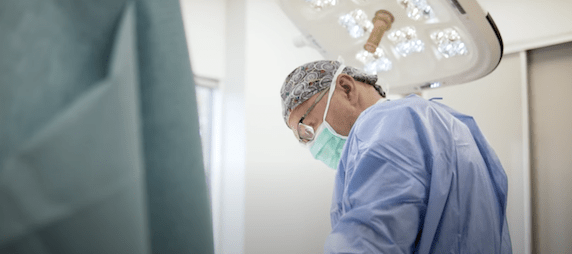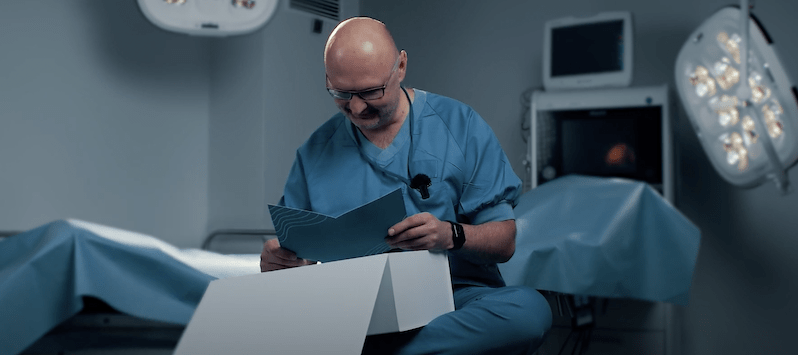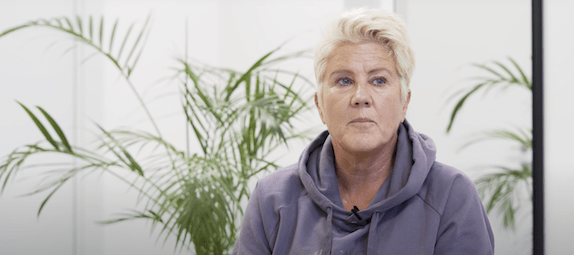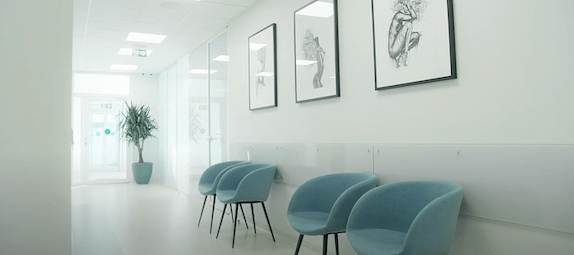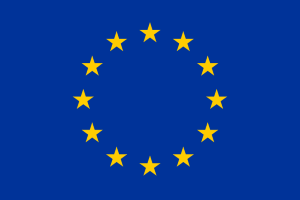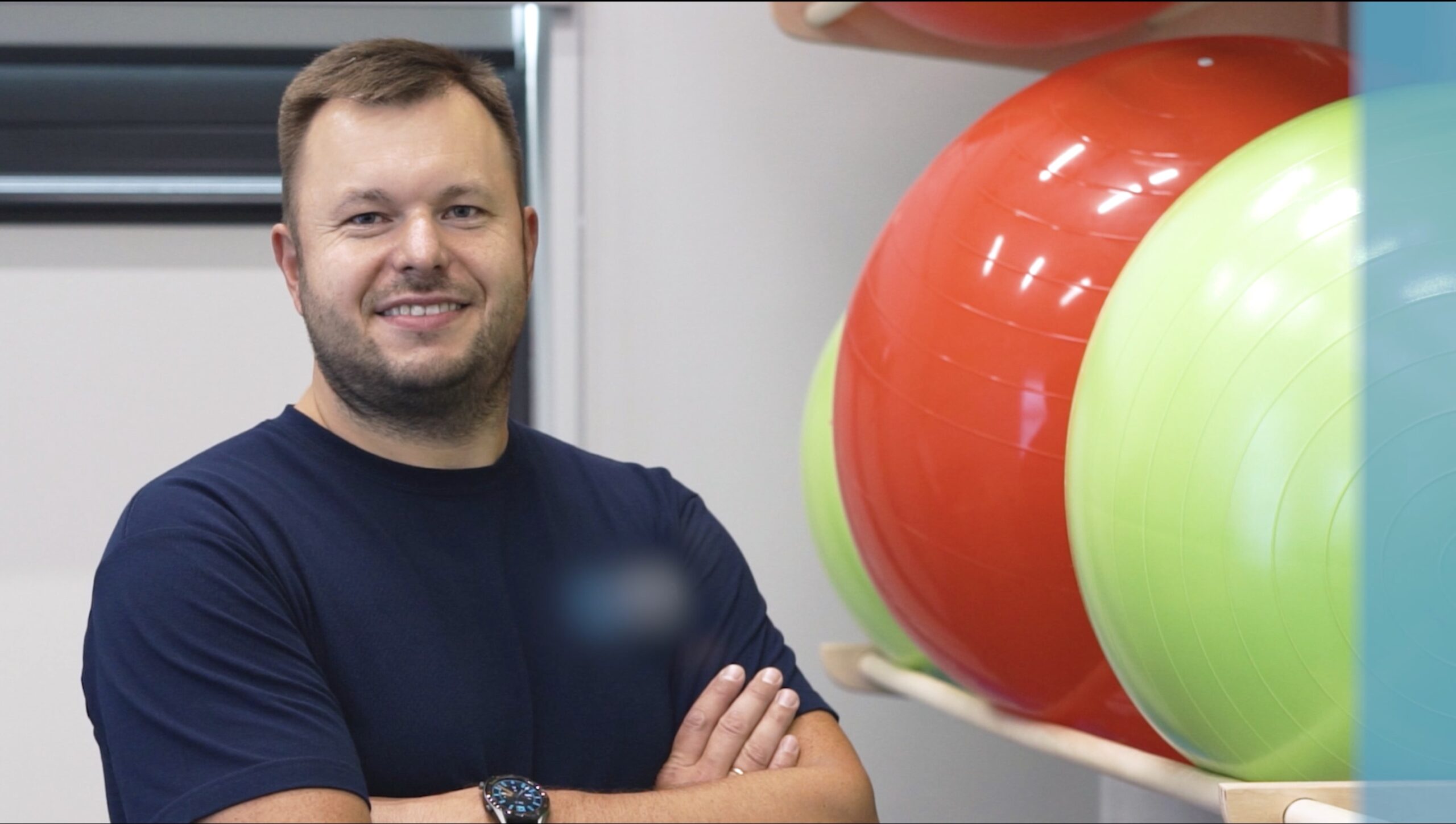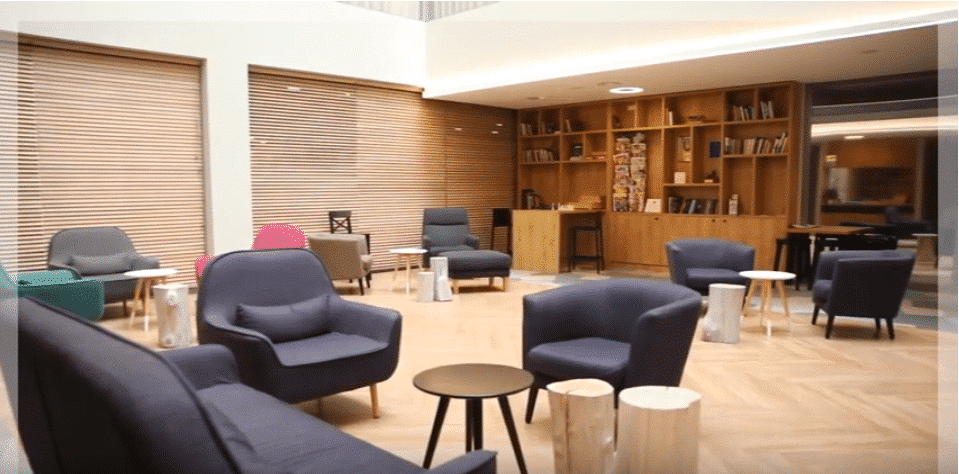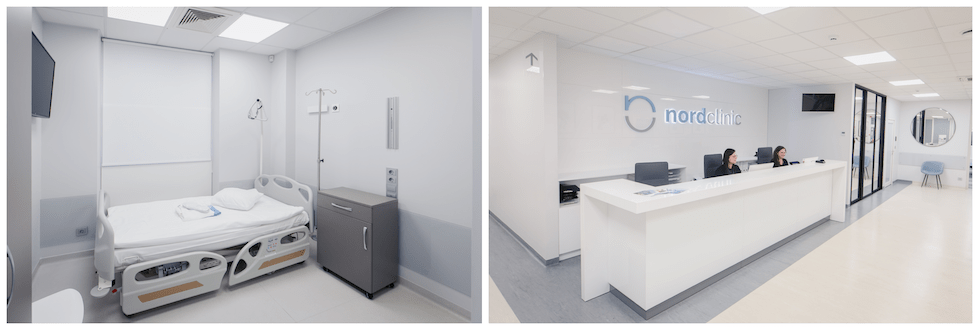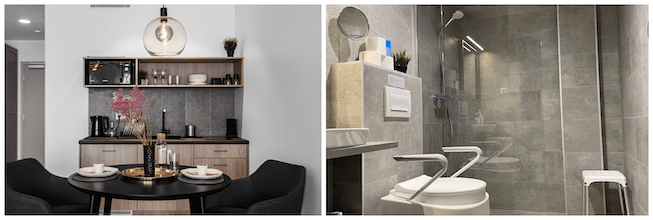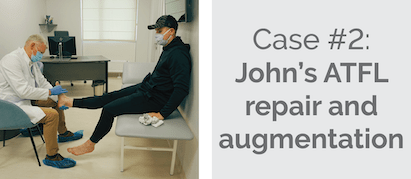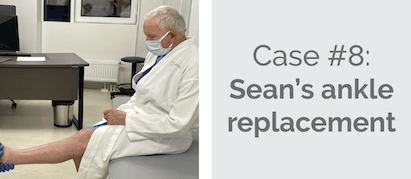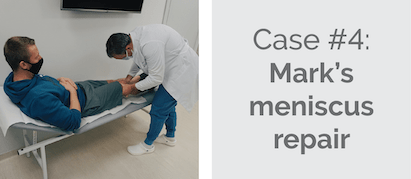Rotator Cuff Repair Surgery Abroad: Lithuania
We are one of the leading orthopaedic surgery clinics for medical tourists in the European Union. We are proud of the fact that over 90 % of our patients come from the UK, Ireland, Norway, Sweden, the United States, Canada and other countries.
Reviews & Facebook group
Our patients and clinic in the media
Prices
- rotator cuff repair surgery – from 2.875 £
- MRI performed in 1 day – from 155 £
- accommodation with medical care – from 62 £ per night
- consultation with the surgeon
- necessary health tests
- surgery
- anaesthesia
- hospitalisation
- 24/7 personal assistance during your stay
- transfers to / from the airport, hotel and clinic
- all documents translated to English
Get your surgery for free by claiming a refund from your local health board. The clinic helps patients with the documents needed to claim a refund after following the EU directive route for medical treatment abroad. It applies to patients who are insured under the systems of one of the EU countries and may not get the surgery due to long waiting times.
- rotator cuff repair surgery – from 3.450 €
- MRI performed in 1 day – from 180 €
- accommodation with medical care – from 74 € per night
- consultation with the surgeon
- necessary health tests
- surgery
- anaesthesia
- hospitalisation
- 24/7 personal assistance during your stay
- transfers to / from the airport, hotel and clinic
- all documents translated to English
Get your surgery for free by claiming a refund from your local health board. The clinic helps patients with the documents needed to claim a refund after following the EU directive route for medical treatment abroad. It applies to patients who are insured under the systems of one of the EU countries and may not get the surgery due to long waiting times.
Patient stories
Clinic videos
Nordorthopaedics Center Of Excellence
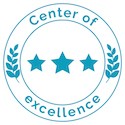
Our surgeon Valdemar Loiba
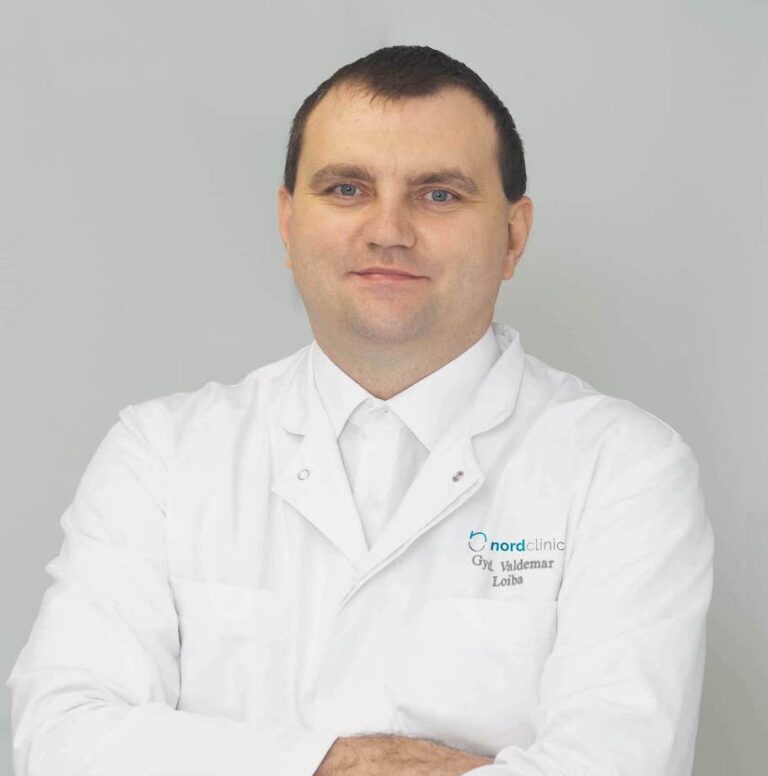
- More than 15 years of working experience
- Performs 400+ arthroscopies a year.
- Author of 6 international oral presentations
- Read more
Refund for EU patients
Get your surgery for free by claiming a refund from your local health board. The clinic helps patients with the documents needed to claim a refund after following the EU directive route for medical treatment abroad. It applies to patients who are insured under the systems of one of the EU countries and may not get the surgery due to long waiting times. On average our patients from the EU countries get fully refunded by their local health board in 5 months after their surgeries.
Rehabilitation packages
One of the most important factors for a quick and full recovery after surgery is proper rehabilitation. Rehabilitation helps recover after surgery as well as prevents formation of blood clots and helps avoid most of the postoperative complications and side effects. We offer two different rehabilitation packages:
Outpatient rehabilitation in Kaunas with a physiotherapist. The rehabilitation clinic is equipped with modern facilities. Individual rehabilitation programs are prepared by a kinesiologist with over 20 years of experience, Prof. Laimonas Siupsinskas. This type of rehabilitation is best suited for people who are physically active, athletes and those wishing to return to sports as soon as possible.
Rehabilitation in Kaunas – € 120 / £ 100 for one 1 h physiotherapy session per day.
- personalized rehabilitation course;
- specialist who is also a physiotherapist for Lithuanian Men’s National Basketball Team;
- all required medication;
- transportation to/from the rehabilitation clinic;
- read more about outpatient rehabilitation in Kaunas.
Inpatient rehabilitation at SPA resort in Druskininkai. It is equipped with modern facilities. The professionals there have years of experience working with people after various surgeries and injuries.
Rehabilitation at SPA resort in Druskininkai – from € 220 / £ 183 per day
- personalized rehabilitation course;
- room with TV and private bathroom;
- three meals a day;
- all medication needed;
- transportation to/from the rehabilitation centre;
- read more about inpatient rehabilitation in Druskininkai.
Our clinic
Self-catered accommodation with medical care
11 reasons that make us the most popular orthopaedic clinic abroad
One of the most important factors for a quick and full recovery after surgery is proper rehabilitation. Usually, clinics are not able to offer this due to costs savings. Our patients can choose between two inpatient and outpatient options: rehabilitation with a physiotherapist of the Lithuanian national basketball team, prof. L. Siupsinskas or rehabilitation at a medical SPA.
Our team of 5 orthopaedic surgeons has 10-20 years of experience in the field in total performing over 1.000 different orthopaedic surgeries per year. Moreover, our surgeons are members of various prestigious surgical societies both Lithuanian and international. Our leading joint replacement surgeon S. Tarasevicius is an author of 150 scientific publications in different medical journals, who has performed more than 3.500 joint replacement surgeries during 15+ years of his professional experience.
We are one of the leading orthopaedic surgery clinics for medical tourists in the European Union. We are proud of the fact that over 90 % of our patients come from the UK, Ireland, Norway, Sweden, the United States, Canada and other countries.
One of the world’s leading medical technology companies and orthopaedic implant manufacturers, Smith & Nephew, have chosen Nordorthopaedics as Center of Excellence in the Baltic States.
We are trusted by our patients and we appreciate all the reviews and feedback collected over the years. Find more than 150 testimonials here or on Google.
Already more than 4.000 of our former, current and future patients joined our online community with the aim to build a space for opinions and mutual support. Members are welcome to share experiences about their visit to the clinic and to discuss all surgery-related matters. No other orthopaedic clinic can offer such group support.
Being a true member of the International Society of Arthroplasty Registries, Lithuania is one of the leaders in low joint replacement revision rates, as only 9% of surgeries in Lithuania require revision in 10 years after surgery. Moreover, with the implants used at our clinic, only 2-3% of surgeries require revision in 10 years after surgery, while revision rates in some other Western countries, for example, USA, is as high as 17% in 10 years after surgery. The implants used at our clinic have been evaluated by other countries’ registries as those ensuring longest implant life, as compared to products of other manufacturers. Moreover, thanks to our active participation in collecting data for the registries, the surgical technique used at our clinic ensures best surgical outcomes.
Our clinic is seen on different media mentions like: BBC News, BBC Radio, The Telegraph, MailOnline, Winnipeg Free Press, CTV News, CBC, RTE Radio, itv.
Our clinic works according to the highest standards set by the European Union. This helps to guarantee the quality of medical services. We care about the safety, comfort and successful results of our patients from all over the world.
The clinic helps patients with the documents needed to claim a refund after following the EU directive route for medical treatment abroad. It applies to patients who are insured under the systems of one of the EU countries and may not get the surgery due to long waiting times.
We provide customer service in 9 foreign languages including English, Swedish, Norwegian, Danish, Italian, Spanish, French, Russian, Polish. Everyone in our clinic speaks English, including nurses, assistants and the surgeon.
Athletes treated at Nordorthopaedics
Official clinic of Lithuania national football teams

Highest quality implants
Our clinic uses implants based on their performance in international registries.
Being a true member of the International Society of Arthroplasty Registries, Lithuania is one of the leaders in low joint replacement revision rates, as only 9% of surgeries in Lithuania require revision in 10 years after surgery. Moreover, with the implants used at our clinic, only 2-3% of surgeries require revision in 10 years after surgery, while revision rates in some other Western countries, for example, USA, is as high as 17% in 10 years after surgery. The implants used at our clinic have been evaluated by other countries’ registries as those ensuring longest implant life, as compared to products of other manufacturers. Read more here.
13 patients' case studies
Direct flights to Lithuania





What is the rotator cuff and what is its function in shoulder anatomy?
The rotator cuff is a group of muscles and tendons that provide shoulder movement and stabilize the joint between the upper arm bone (also known as the humerus) and the shoulder blade. There are four muscles that make up the rotator cuff :
- the supraspinatus,
- the infraspinatus,
- the teres minor
- the subscapularis muscle.
The tendons of each of these muscles connect to the arm bone. Not only does the rotator cuff allow you to rotate your arm, it also makes it possible for you to lift your arm above the level of your shoulders.
What is a rotator cuff repair and how is it performed?
Even though some rotator cuff tears may be treated with conservative methods, there are cases that require surgical intervention. There are three main ways to surgically treat a rotator cuff tear, and the choice of the best method depends on various factors, including the severity of the tear and the unique elements of your shoulder anatomy.
Even though technology has advanced to a point where less invasive methods are chosen more often, certain indications such as a complex or a large tear still exist for performing an open procedure. During an open repair, your surgeon makes an incision over the shoulder and detaches the deltoid shoulder muscle. Using open repair to treat a rotator cuff tear may benefit those who also need to fix any additional problems with their shoulder.
Modern methods allow surgeons to insert a camera (called an arthroscope) into the shoulder joint, therefore avoiding the necessity to make a large incision. The inside of the joint is displayed in a monitor, which helps the surgeon to be more precise during the procedure.
Unlike open repair, the incision for this procedure is comparatively small – from 3 to 5 centimeters long. Nonetheless, this technique involves repairing the torn tendon while looking at it directly rather than through an arthroscopic camera. However, arthroscopy is included if there is a need to evaluate and treat any other type of damage within the shoulder joint.
Repairing the rotator cuff involves using suture anchors (small rivets), which are used to attach the tendon to the bone. There are different types of anchor sutures available – they can be either made of metal or dissolvable material.
Rotator cuff tear diagnosis and symptoms
After a rotator cuff tear, the tendons are no longer completely attached to the humerus. The tear can be either partial (the tendon is damaged but not fully separated from the bone) or full – thickness (the tendon is completely severed from the bone). Rotator cuff tears can occur due to multiple causes which include injuries, lifting something too heavy or simply wearing down the tendons with repetitive movements over a longer period of time (also known as a degenerative tear). Depending on the nature of the damage the symptoms may vary. However, pain is usually present in both acute and degenerative tears. The pain may occur during specific shoulder movements or even at rest and during the night. Over time, the severity of the pain increases, and you may notice that over – the – counter painkillers do not relieve it. Besides that, you may feel weakness in your arm, especially when attempting specific movements. Last but not least, you may also feel a crackling sensation in your shoulder joint when moving your arm.
There are various ways to diagnose a rotator cuff tear:
- At first, your doctor will ask about all of the symptoms you have noticed.
- It is also necessary to perform a physical examination, such as moving your arm in different ways and testing your arm strength.
- After that your doctor will confirm the diagnosis by running other tests such as X – ray, magnetic resonance imaging (MRI) or an ultrasound.
Preparation for the surgery
More often than not, your physician will first attempt to treat the damage to your rotator cuff with conservative methods, such as rest, ice packs and physical therapy.
In other cases surgery is recommended as a primary choice of treatment (continued pain being the most frequent reason for such a choice). If so, you will have a consultation with your surgeon during which you will be able to discuss any concerns or questions you may have regarding the procedure.
Moreover, your surgeon will evaluate your overall health, collect your medical history and ask you about any type of medications you are taking or had taken in the past (including over – the – counter drugs and herbal supplements).
Additionally, your surgeon will brief you about the steps you will have to take to get ready for the procedure. In most cases certain medications, such as non – steroidal anti – inflammatory drugs are to be avoided before the surgery.
Besides that, patients are required to stop smoking well in advance before the surgery, as it may interfere with the healing process.
Hospitalization and the first few days after the surgery
You will be required to stay at the clinic for a few days after the surgery. Each procedure differs in its recovery process – the recovery after an arthroscopic repair takes less time than after an open one. Nonetheless, your shoulder will be swollen and painful, in addition to feeling some degree of fatigue for the first few days. Moreover, your shoulder function will not be immediately restored after the operation. Pain management will be the main focus of the first few days post – surgery. Therefore, your surgeon will prescribe the necessary painkillers and any other necessary medications
The importance of physiotherapy
You will have to limit your physical activity for up to five weeks after the operation – be sure to avoid lifting any weights, as it stresses the repaired muscle.
You will have to wear an arm sling (also known as a Dezo brace) at all times after the surgery. A sling makes sure that your arm is comfortable and protects your shoulder joint while it is still healing. Depending on the repair, the arm sling is to be worn for up to six weeks following the surgery. As time passes, you will be able to take the sling off for a couple of hours during the day and slowly increase the time without the brace.
In addition, sleeping may be a bit more difficult while your shoulder is healing. It is recommended to sleep in a semi – upright position or place something under your upper arm in order to support it. It is important to mention that you cannot take off your arm sling during sleep.
Furthermore, medication is sometimes not sufficient for postoperative pain management. In these cases your surgeon may suggest cryotherapy. Studies show that cryotherapy (a treatment that involves using low, near – freezing temperatures) is beneficial for patients who have undergone shoulder surgery, as these patients report less pain, swelling and better rehabilitation results than the patients who managed their pain with medications only.
Physiotherapy exercise routine may be either home-based or monitored by the health professionals in rehabilitation facilities. Studies have shown that light to moderate regular exercises show short-term improvements in patients’ physical function, whereas more intensive ones have positive long-term outcomes. In order for a certain therapeutic approach to give good results the right combination of physiotherapy methods should be selected for each patient individually.
Physiotherapy
At first, physiotherapy is necessary to reinforce tissue healing, reduce pain and inflammation, and to decrease the chances of postoperative stiffness development. Eventually rehabilitation will help regain shoulder function and full – range movements. Physiotherapy after a rotator cuff repair is divided into stages:
- Passive motion stage. This means that the muscles of your rotator cuff must move without putting stress on the repair. Therefore, your physical therapist will move your arm for you and, if necessary, provide instructions on how to move your own shoulder without actively contracting the muscles.
- Active motion stage. The active motion stage begins when your tendons have healed to an extent where you are able to move your arm actively. However, it must be stressed that you should not move your arm against resistance.
- Strengthening stage. Often referred to as one of the most important steps of rehabilitation.This stage involves using specific exercises with light weights or resistance bands to strengthen your rotator cuff muscles, as they become weak because of the injury, surgery and immobilization.
- Full activity phase. Reaching this stage can often take up to six months depending on the extent of the injury. Nonetheless, this is the stage where one reaches full recovery – each case is individual and different patients regain their full shoulder function at different times.
Returning to sports and normal physical activity after rotator cuff repair
As full recovery is most often reached after six months, the level of normal physical activity should increase alongside physical therapy. Additionally, you should wait for six months before you return to no – contact sports. Returning to contact sports can take longer – from nine months to a year.
Send us your enquiry








